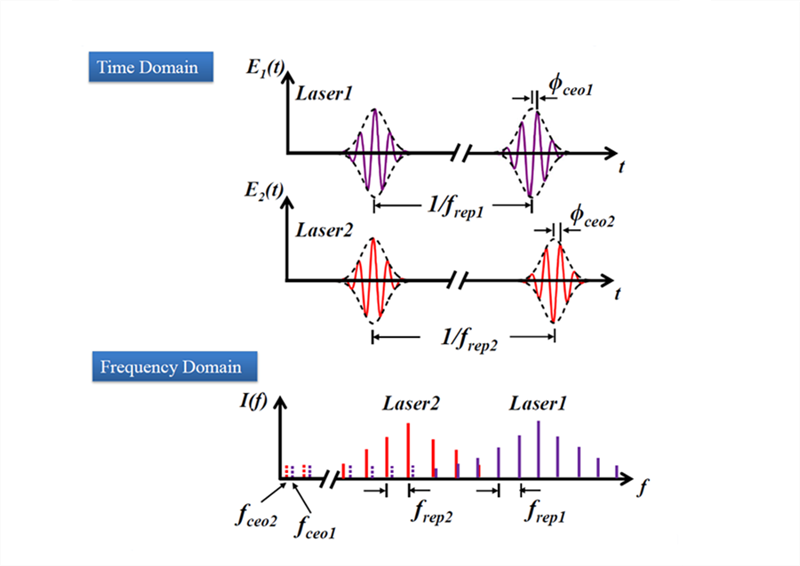Ultrafast laser laboratory of school of precision instrument and opto-electronics at Tianjin University has recently demonstrated long term stable coherent beam combination (CBC) between independent femtosecond (10-15 s) fiber lasers for the first time. The achievement is possible due to broadband quantum noise reduction as well as unprecedented attosecond (10-18 s) precision pulse timing control of femtosecond fiber lasers. This work has been online published at Optics Letters as cover story[a].

Femtosecond lasers have unique time-frequency characteristics. In time domain, they emit optical pulse trains with ultrashort pulse duration. In 1999, Ahmed Zewail won the Nobel Prize in chemistry for taking films of chemical bonds break and re-form over a timescale of 100 to 200 femtoseconds by utilizing the ultrashort laser pulses from femtosecond lasers. In the optical frequency domain, these lasers output a comb-shaped spectra, composed of millions of equally spaced phase coherent discrete spectral lines. In 2005, Theodor W. Hansch and John L. Hall won the Nobel Prize in physics for the development of optical frequency comb technology, which has made absolute optical frequency metrology come true.
CBC technique has been recognized as an attractive approach to further extend the applications of femtosecond lasers. For instance, CBC between different femtosecond lasers with different wavelengths potentially enables sub-cycle laser pulse generation in the visible-infrared spectral regime. However, this method has been found to present tremendous challenges. As an essential prerequisite, the precision on the detection and stabilization of both the relative timing jitter and carrier envelope phase (CEP) jitter have to reach few tens of attoseconds, which approaches atomic timescale that electron excitation process sustains.

Principle of coherent beam combination between femtosecond lasers
Till now, only very short term CBC of femtosecond lasers has been reported due to the technical complexity. Prof. Song Youjian, Prof. Hu Minglie and their team at Ultrafast laser lab, in collaboration with National Metrology Institute of China found that the broadband quantum noise of femtosecond lasers was the major obstacle for high quality CBC. By manipulating the nonlinear pulse dynamics of femtosecond fiber laser for passive quantum noise suppression, aided by attosecond precision timing and optical phase error correction, they realized one hour long CBC between independent Yb-fiber lasers for the first time. This practical CBC technique brings new perspectives to a number of unique applications, such as single cycle optical pulse synthesis, arbitrary optical waveform generation and remote femtosecond frequency comb connection.
CBC between femtosecond lasers is a sub-branch of attosecond precision photonics. For a comprehensive knowledge on this research field, one could refer to a recent review article composed by Prof. Kim Jungwon from KAIST, Korea and Prof. Song Youjian from Tianjin University[b].

Ultrafast Laser Lab at Tianjin University
Ultrafast laser lab at Tianjin University is reputable research lab around the world. It is the very first research lab in China that concentrated on femtosecond laser technology, which was established by Prof. Chingyue Wang in the early 1980s. This lab has been on the frontier of ultrafast laser research from foundation. The research interest is femtosecond laser technology and the applications in bio-photonics, precision metrology, Terahertz wave generation and micro-machining.
[a] https://www.osapublishing.org/ol/issue.cfm?volume=41&issue=22
[b] Jungwon Kim and Youjian Song, Adv. Opt. Photon., 8, 465 (2016). Journal impact factor: 12.368






